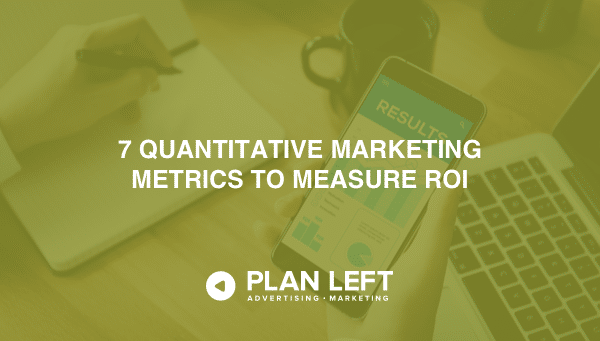
Updated Content 06/22/2023
What is working in your business? How do you know it is working? Does your business ‘feel’ like it is doing well, or are you looking at your outgoing invoices and whether or not they are growing compared to last year? It can be challenging to tell how well your business is performing.
Return on investment (ROI) is the most important thing that marketers can measure when launching a new campaign. ROI tracks the cost of the marketing campaign against the revenue generated from the campaign. Although the ROI equation is relatively simple, it’s not always easy to know just how much revenue your campaign has returned for you. At least 33% of content marketers find it challenging to calculate an accurate ROI. If you’re part of that 33%, there are a few key metrics you can measure in your everyday marketing to get a better picture of your ROI. Read on to learn about what we think are the top seven quantifiable marketing metrics.
Unique Monthly Visitors
Unique monthly visitors measure the number of visitors your website attracts every month. This metric is helpful if you want to see if your latest marketing campaign effectively leads consumers to your website homepage or a particular landing page.
Google Analytics and other programs allow you to see where these website visitors are coming from, whether organic search, paid search, social media, referrals, or a different traffic source. This will tell you what traffic sources are working well and which need some work. If you’re getting a low percentage of visitors from organic search, it’s time to ramp up your SEO game!
Cost Per Click
Cost per click (CPC) is usually used for pay-per-click ads, meaning that you will have to dish out money for each click that you get. This is another metric you can find in Google Analytics. CPC is helpful because you can see exactly where your money is going. Although you must spend money to earn money, you want to set your cost-per-click bid at a reasonable price. Ensure you get at least $1.01 back for every $1 spent.
Cost Per Lead
Cost per lead (CPL) is most often used to track the profitability of your paid traffic. Calculate CPL by dividing your ad spend by the total number of new leads. If your CPL is ridiculously high, you should reevaluate your paid marketing strategy.
Lead-To-Close Ratio
How do you tell if your leads are good ones? Will they follow through to purchase? Check how you’re doing with the lead-to-close ratio (LTCR). Divide the number of closed leads by the total amount of leads to see if your leads are turning into customers.
Conversion Rate
Conversion rate measures the percentage of consumers that follow through the conversion stage of the consumer journey. You’ll find that this metric looks similar to the lead-to-close ratio, but conversions don’t have to mean purchases. Conversions can also be signing up for emails, filling out a contact form, or starting a free trial.
Cost Per Acquisition
Cost per acquisition (CPA) is like cost per lead, except we’re taking it one step further. CPA measures the price of a new customer rather than just a potential one.
All you have to do is divide your total digital marketing expenses by the new customers acquired. Like with CPL, high costs mean you may want to adjust your paid platforms or the content you’re putting out.
Customer Lifetime Value
While we’re on the topic of customers, let’s analyze customer lifetime value (LTV). LTV determines whether your ad spend on each customer is actually worth it.
How much revenue does the average customer generate over their lifetime? If you spend an average of $100 acquiring each customer, you will hope they aren’t just making a one-time purchase of $100. Ideally, once you’ve acquired a customer, they’re coming back over and over again, adding to their LTV every time.
You’re on the right track as long as you’re measuring your marketing spend and making improvements as you go. If ROI is still a little confusing for you, no worries. Plan Left is here to set you up with a successful marketing strategy- and a way to measure it. Contact us today to see how we can help.
Explore Latest Posts
Google says the quality of your webpage is a ranking factor, but what is ‘quality’ according to Google? That would ... read more
April 19, 2024
In 2011, Google first changed how content was written with the Panda Update by changing how keywords could be used ... read more
April 17, 2024
The latest Google algorithm changes have shaken the search marketing world. While the Google Spam update has finished, the Google ... read more
April 16, 2024
MARKETING insights
Join the Thousands Who Receive Our Twice-Monthly Newsletter.
It's hard to keep up. Our newsletter is packed with buyer behavior insights, the latest marketing and technology updates, work/life balance tips, and—because we ❤️ our support staff—adorable pets looking for forever homes. Only twice per month. No clogged inboxes. You can't say no.




